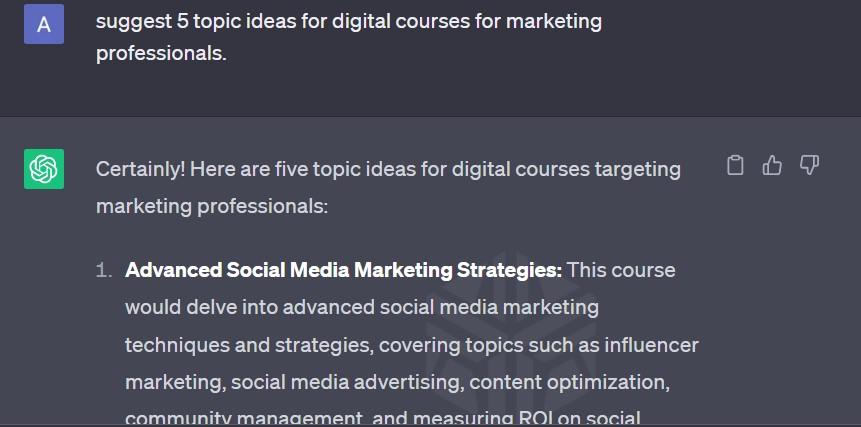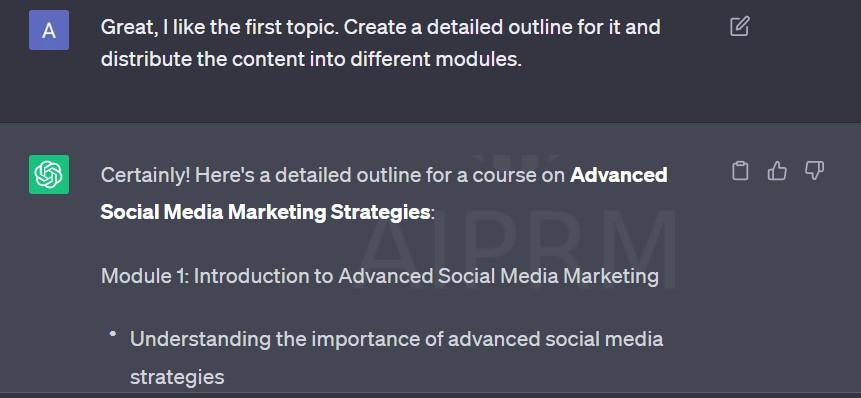Currently Empty: $0.00
In today’s digital age, online learning has become increasingly popular, and creating an engaging and informative course has never been easier. With the advancements in artificial intelligence, specifically with language models like ChatGPT, you can now develop high-quality courses that provide valuable information.
Table of Contents
This article will guide you through the process of creating a course with ChatGPT, empowering you to deliver an exceptional learning experience to your target audience.
Understanding the Capabilities of ChatGPT
Before we dive into the specifics of course creation, let’s take a moment to understand what ChatGPT is. ChatGPT is a state-of-the-art language model developed by OpenAI. It leverages deep learning techniques to generate human-like text responses. By training on a vast amount of data, ChatGPT has learned to understand and generate coherent and contextually relevant responses to a wide range of queries. Its ability to simulate conversations makes it an excellent tool for creating interactive and dynamic learning experiences, and therefore people are leveraging the AI capabilities of ChatGPT to create online courses efficiently.
Now let’s discuss the step by step process of creating an engaging course with ChatGPT.
Step 1: Define the Course Objectives
The first crucial step in creating a course with ChatGPT is defining clear and precise course objectives. Ask yourself: What do you want your learners to achieve by the end of the course? Having well-defined objectives will not only help you structure your course but also guide your content creation process. Make sure your objectives are SMART – Specific, Measurable, Attainable, Relevant, and Time-bound.
For example, here we are asking ChatGPT to suggest 5 ideas for beneficial digital courses for marketing professionals. ChatGPT is not only suggesting topic ideas but also covering SMART objectives as to what can be covered in the course.

Step 2: Planning the Course Structure
Now that you have established your course objectives, it’s time to plan the course structure. Start by breaking down the main topics or modules that align with your objectives. Each topic should have a logical flow and represent a building block in the learning journey. Consider distributing your content into different modules to organize and make it easier for learners to navigate.

Step 3: Developing Engaging Content
Creating engaging content is crucial for capturing your learners’ attention and fostering their active participation. Here are some tips to develop compelling course content:
- Begin with a Powerful Introduction
Craft an attention-grabbing introduction that clearly communicates the value of the course and sparks curiosity. Your introduction should also cover the course structure, any prerequisites that are required, and the duration of the course. Explain how the course will benefit the learners and what they can expect to gain from it.
- Incorporate Multimedia Elements
To make your course visually appealing and enhance the learning experience, consider incorporating multimedia elements. These can include videos, images, infographics, and interactive quizzes. Visual aids help reinforce concepts and make the content more memorable and engaging.
- Use ChatGPT for Interactive Activities
One of the unique advantages of using ChatGPT to create courses is its conversational nature. Integrate interactive prompts where learners can engage in simulated conversations with ChatGPT. This provides them with hands-on practice and the opportunity to apply what they have learned.
- Provide Practical Examples and Case Studies
Real-life examples and case studies are invaluable for illustrating concepts and demonstrating their practical application. Relate the course material to relevant scenarios, allowing learners to connect theory with real-world situations.
- Encourage Collaboration and Discussion
Facilitate a sense of community among learners by incorporating collaborative activities and discussion forums. This fosters knowledge sharing, encourages critical thinking, and creates a supportive learning environment.
- Break Content into Digestible Chunks
Avoid overwhelming learners with dense blocks of text. Break your content into smaller, digestible chunks with relevant examples. This makes it easier for learners to comprehend and retain information.
- Include Formative Assessments
Regular formative assessments, such as quizzes and short exercises, help learners evaluate their understanding of the material. These assessments also provide an opportunity for learners to reinforce their knowledge and identify areas that require further review.
Step 4: Iterative Improvement and Feedback
Once you have developed your course content, it’s essential to undergo an iterative improvement process. Gather feedback from early learners or subject matter experts to identify areas for improvement. Continuously refine and iterate upon your course materials to ensure they align with the needs and expectations of your target audience.
Creating a course with ChatGPT can be an exciting and rewarding endeavor. By following the steps outlined in this article, you can develop a comprehensive and engaging course that empowers learners with valuable knowledge. Remember to define clear objectives, plan the course structure effectively, create compelling content, and continuously seek feedback for improvement. With the power of ChatGPT at your disposal, you have the potential to leave other websites behind and provide a truly exceptional learning experience.

